First Japanese Night Radar-Assisted Bombing Attack
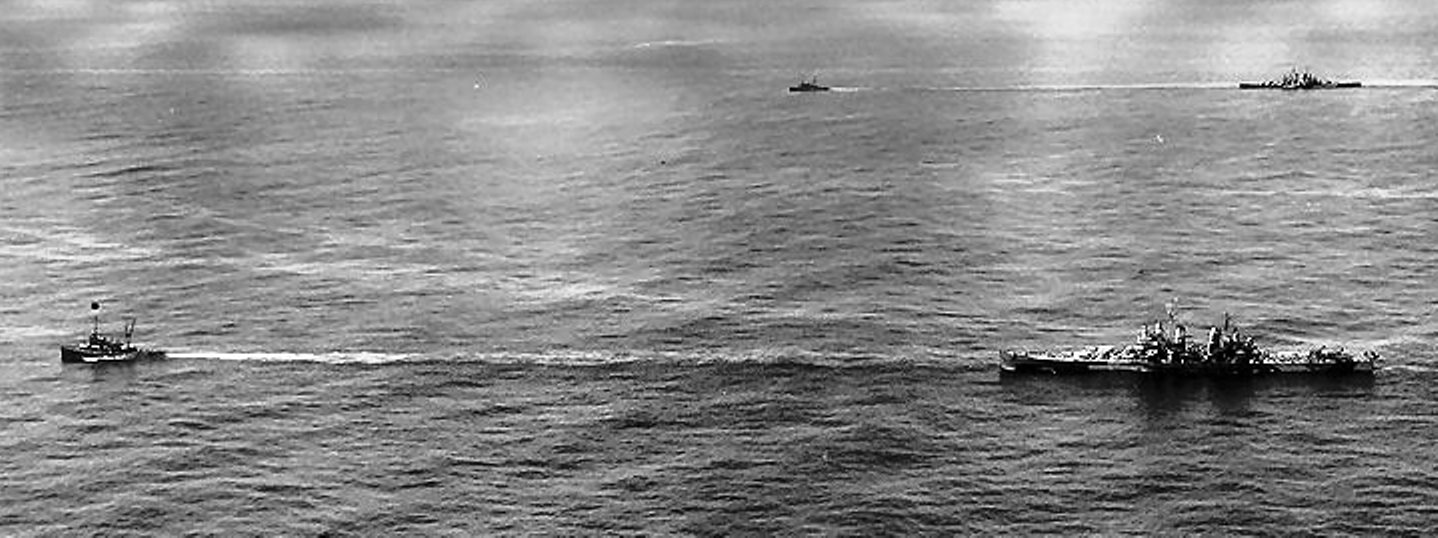
1 February 1944:
The Imperial Army Air Force (IJAAF) Air Combat Group (Hiko Sentai) 98 starts conversion from Mitsubishi Type 97 Ki-21 ("Sally") bombers to the new Mitsubishi Type 4 Ki-67 Hiryu (flying dragon)("Peggy") Army twin-engine heavy bombers. The Navy crews call these bombers "Yasukuni".
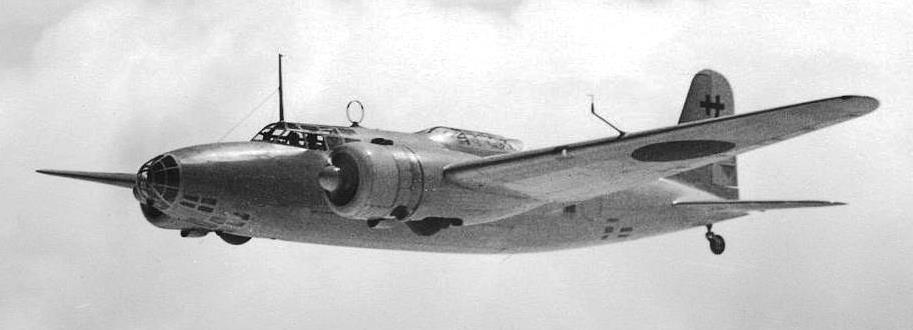
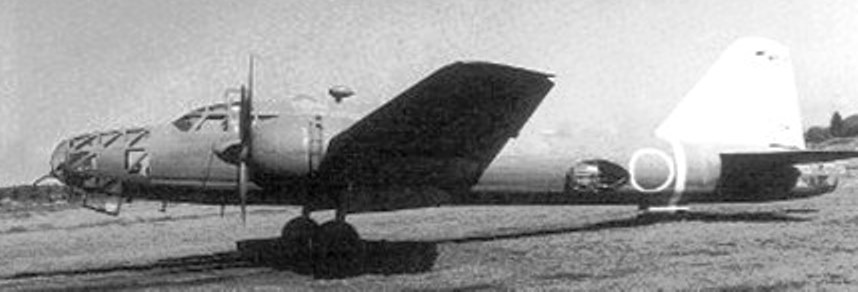
Kanoya IJNAF Base, Kyushu. The 762nd NAG’ aviators train in Kanoya using Mitsubishi Type 96 G3M2 ("Nell") Navy Attack Bombers. 15 February 1944:
Hsinchu Air Base, Formosa. The "Tkōgeki Butai" (Typhoon or T-strike force) is established and operated by the 762nd Naval Air Group (NAG)(Kokutai), a subordinate unit of the First Air Fleet based in the Philippines. The Tkōgeki Butai consists of Naval Air Squadrons (Hikotai) land-based bomber units K262, K501, K703, and K708,reconnaissance unit T1, fighter unit S303, plus IJAAF Sentai (Air Combat Groups) 7 and 98 directly subordinate to 762nd NAG. The 762nd NAG’s two major types of aircraft are the older Mitsubishi G4M Rikko ("Betty") Navy bombers and the new Yokosuka P1Y Ginga (Milky Way)("Frances") twin-engine Navy bombers.
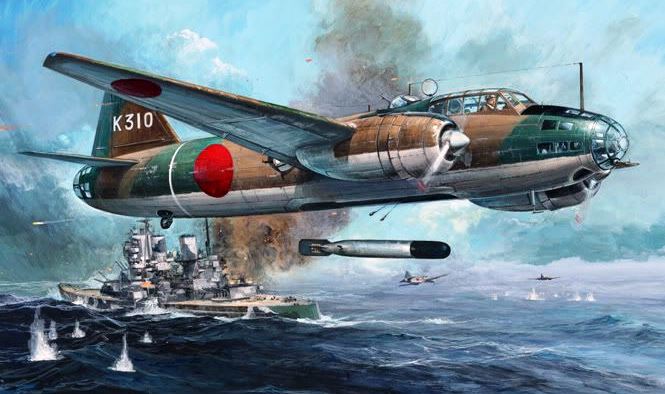
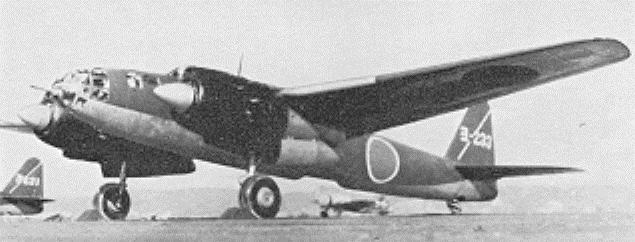
Vice Admiral Fukudome Shigeru (40) is appointed Commander-in-Chief of the IJN Second Air Fleet activated that same day. Fukudome establishes his headquarters at the Katori Naval Air Base in Chiba, near Tokyo. July 1944:
Admiral Fukudome orders his dispersed air units to concentrate in air fields on Kyushu. 10 July 1944:
Admiral Fukudome moves his headquarters to the Kanoya Naval Air Base in southern Kyushu. Fukudome supervises training at the Kyushu air bases for about three months. He places special emphasis on the training of the Tkōgeki Butai which was established to operate in total darkness or in very bad weather. These conditions would make it easier to operate the best IJNAF aircrews against USN aircrews who, in his opinion, were unprepared to fight in such weather, demonstrating that IJN senior officers are still unaware of the advanced types of USN radar and their capabilities. July 1944:
34 Mitsubishi Type 4 Ki-67 Hiryu "Peggy") Army bombers of Sentai 98 are attached to the 762nd Naval Air Group (NAG) as Hikotai 3. Its place in training is taken over by Sentai 7 that has just converted from Nakajima Army Ki-100 Donryu (Storm Dragon)("Helen") bombers. Sentai 7 is also attached to the IJN 2nd Air Fleet based in Formosa. Both units are included in the Tkōgeki Butai all-weather night and day combat squadons. In fact, about half of the Tkōgeki Butai is composed of Army elements. August 1944:
Veteran aviator Captain Kuno Shuzo (49) is appointed commander of the 762nd NAG. He remains in this post until the end of the war. 10 September 1944:
Admiral Fukudome moves his Second Air Fleet headquarters from Kanoya Naval Air Base, Kyushu to the Takao Naval Air Base in southern Formosa (Taiwan). Fukudome then begins to move his air units to Formosa. 12 October 1944:
Vice Admiral Marc A. Mitscher's Task Force 38 carriers launch 1,398 sorties against shipping, air fields and industrial plants on Formosa. Mitscher's force destroys Second Air Fleet's headquarters and about one third of its fighters. Task Force 38 loses 48 aircraft. In the afternoon, an elite combined Japanese Navy and Army force of 101 radar equipped twin engine torpedo bombers of the Tkōgeki Butai take off from Kyushu and Okinawa to launch a large scale radar assisted night torpedo attack on TF 38 – the first ever attempted by the Japanese. The attackers include 23 new Army Mitsubishi Ki-67 Hiryu ("Peggy") bombers of Sentai 98, Navy Type 96 G3M2 ("Nell") and G4M Rikko ("Betty") bombers and Nakajima C6N Saiun (Painted Cloud)("Myrt") two-seat night fighters launched from Kanoya and refueled on Okinawa. The Navy Mitsubishi G4M "Betty" bombers are fitted with the 150 to 160 MHz Air Mark VI search radar, while the Army Ki-67 "Peggy" bombers carry the 200 to 209 MHz Taki-1 search radar. By this time, the 762nd NAG's crews have completed at least six months of sea training. [1] At 1300, Navy K501 Squadron launches 23 P1Y Ginga ("Frances") bombers (12 carrying torpedoes, 10 carrying bombs and one carrying flares). K703 Squadron launches 18 G4M Rikko ("Betty”) and P1Y Ginga bombers (all torpedo equipped) and K708 Squadron launches seven torpedo bombers. Army Sentai 98 also launches 20 Ki-67 Hiryu ("Peggy") bombers. The Japanese arrive in the area of the warships and find heavy rain squalls which prevent effective torpedo attacks. However, the weather does not hinder radar-fitted Grumman F6F "Hellcats" of night fighter squadron VFW-41 operating from Captain Edward C. Ewen's (USNA '21) USS INDEPENDENCE (CVL-22). USS CABOT's (CVL-28) night fighters also engage the Japanese. The fighters fight a running battle with the torpedo bombers and claim five shot down. Captain (later Rear Admiral) William W. Behrens light cruiser USS HOUSTON (CL-81) claims four aircraft shot down by her AAA batteries, while other Japanese aircraft fall to other ships' gunfire. Altogether, that night the Japanese lose 42 aircraft.

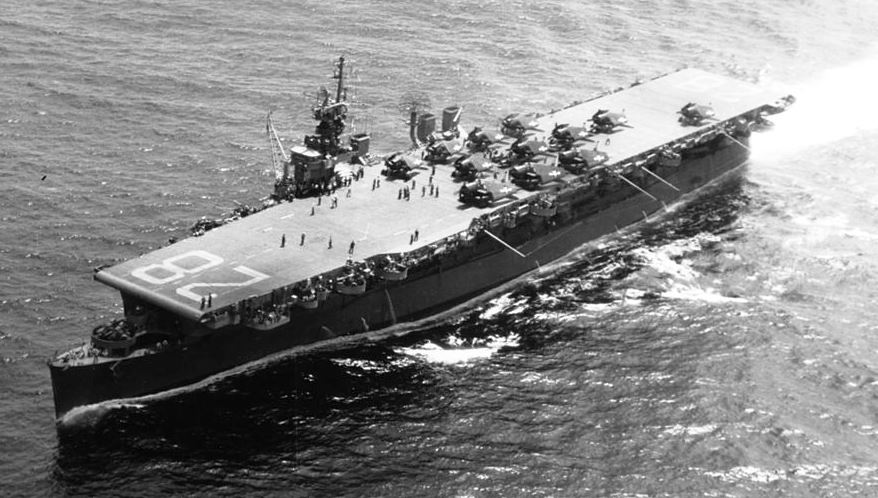
90 miles off Formosa. In the evening from about 1900 to 2020, about 100 aircraft (about 70 torpedo equipped) of the Tkōgeki Butai (bomber units K501,K703, K708 and the T1 reconnaissance Squadron) launch seven attacks on TF 38. TG 38.1’s cruiser USS CANBERRA (CA-70), under the command of Captain (later Rear Admiral) Alexander R. Early, is struck by an aerial torpedo below her armor belt in the engineering spaces. It kills 23 of her crew instantly and some 4,500 tons of water floods her aft fireroom and both engine rooms before damage control parties can isolate the compartments. The cruiser loses all power and comes to a stop. Later, CANBERRA is taken in tow by Captain Douglas A. Spencer's cruiser WICHITA (CA-45). At 1620, the Tkōgeki Butai finds two of Mitscher's TF 38's Carrier Task Groups, one with three and the other with four carriers. At 1720, the Japanese locate another Task Groups with one carrier. At dusk, the Tkōgeki Butai launches 31 land based -bombers (17 carrying torpedoes) and six P1Y Ginga bombers (3 torpedo equipped). At twilight, Captain (later Rear Admiral) Leslie E. Gehres carrier USS USS FRANKLIN (CV–13)("Big Ben"), flagship of TG 38.4 comes under attack by four bombers and is twice narrowly missed by torpedoes. While the carrier is dodging torpedoes, the ship’s anti-aircraft gunners shoot down two twin-engine bombers at close range, one of which crashes on FRANKLIN’s deck abaft the island structure, then slides across the deck and into the water on her starboard side without inflicting serious damage to the carrier. In the day’s actions, the Japanese lose 42 bombers or nearly half of Tkōgeki Butai's aircraft.

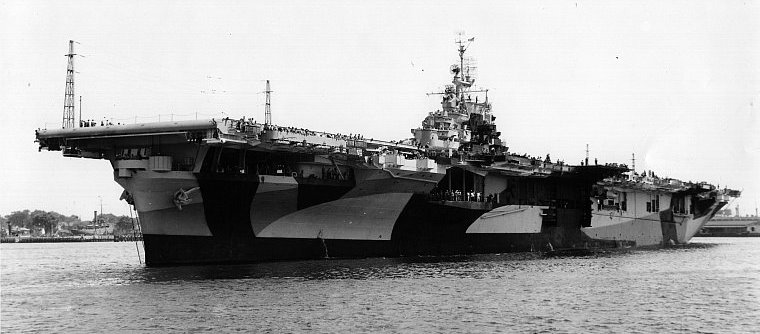
Reinforced by aircraft of the IJN's Third Fleet carriers, the Japanese launch another raid of about 400 aircraft against TF 38. In the morning, TG 38.2’s cruiser USS HOUSTON takes up USS CANBERRA's old station and she and TF 38’s other ships undergo another heavy air attack. HOUSTON’s AAA gunners shoot down three of the attackers, but a Sentai 98 Ki-67 Hiryu ("Peggy") bomber’s torpedo hits HOUSTON’s engine room, causing loss of power. Destroyer COWELL (DD-547) comes alongside to assist in salvage efforts by furnishing light, power, and pumping facilities, but is is damaged when she fouls HOUSTON. Cruiser USS BOSTON (CA-69) then takes HOUSTON in tow until later relieved by fleet tug PAWNEE (ATF-74). [2] Sixteen Ki-67 Hiryu take off from Okinawa and 12 are shot down by USN F6F "Hellcat" fighters and AAA, while three others crash on landing. The only survivor of the air unit is an aircraft piloted by Navy CPO Sato Toshio who returns to base and claims a hit.[3] The task force reforms to provide escort for USS CANBERRA and USS HOUSTON under tow and making four knots towards the USN’s Ulithi Atoll Anchorage near Yap, Caolines, 1,300 miles away. Both ships later safely arrive, but are out of active service for the duration of the war. After the day's raids, returning Japanese torpedo bomber crews report sinking 12 large ships, cruisers and above in size, and destroying 23 smaller warships. Imperial General Headquarters reports this success to the Emperor and announces a major victory to the jubilant Japanese public. Vice Admiral Shima Kiyohide's (39)Second Raiding Force's cruisers NACHI and ASHIGARA departs Kure to "destroy the crippled U.S. Fleet" off Formosa. At 0700, Rear Admiral (later Vice Admiral) Masatomi Kimura's (41) DesRon 1's light cruiser ABUKUMA and DesDiv 7's AKEBONO, KASUMI and USHIO, DesDiv 18's SHIRANUI and Des21's WAKABA, HATSUSHIMO and HATSUHARU sortie from the Bungo Straits with Shima's Second Raiding Force. Bungo Straits. Cdr Thomas L. Wogan's (USNA ’30) USS BESUGO (SS-321) spots Shima's fast moving force at 7,500 yards, but is unable to close. Wogan reports the sighting to COMSUBPAC. 15 October 1944:
The Japanese radio propaganda broadcasts reflect a vast overestimation of losses inflicted on TF 38 by their aircraft. The broadcasts prompt Admiral (later Fleet Admiral) William F. Halsey, Jr. (USNA '04), Commander U.S. Third Fleet, to form Rear Admiral (later Admiral) Laurance T. DuBose's (USNA '13) TG 30.3 to cover the retirement of crippled USS CANBERRA and USS HOUSTON under tow.Vice Admiral (Admiral, posthumously) John S. McCain's (USNA '06) TG 38.1 is augmented to provide cover. Halsey's staff dubs the TGs "CripDiv 1". Halsey also withdraws (later Vice Admiral) Gerald F. Bogan's (USNA '16) TG 38.2 and Rear Admiral (later Admiral) Frederick C. Sherman's (USNA '10) TG 38.3 eastward, supposedly beyond observation by Japanese patrol planes, to set upon any important Japanese fleet units that may attempt to finish off the "crippled remnants" of TF 38. 16 October 1944:
Ninety-nine carrier planes (half bombers, half fighters) depart from bases in Kyushu to attack "CripDiv 1", but Admiral Toyoda Soemu (33), Commander-in-Chief, Combined Fleet, orders their recall to base, probably suspecting a trap. Shima's Second Raiding Force is diverted to Amami-O-Shima, Ryukyus to await further developments. In the afternoon, USS HOUSTON, while under tow by tug PAWNEE, is attacked again by Japanese torpedo planes and hit a second time by a torpedo; this time on on her starboard quarter. Her starboard catapult, Vought OS2U "Kingfisher" spotting plane, aircraft crane and hanger hatch are blown away and her propellers and rudder are badly distorted. HOUSTON suffers severe keel damage and she loses about 25% of her stability. The only reason she remains afloat is the calm sea state. Had the seas been rough, not even the Herculean efforts of the crew would have saved her.
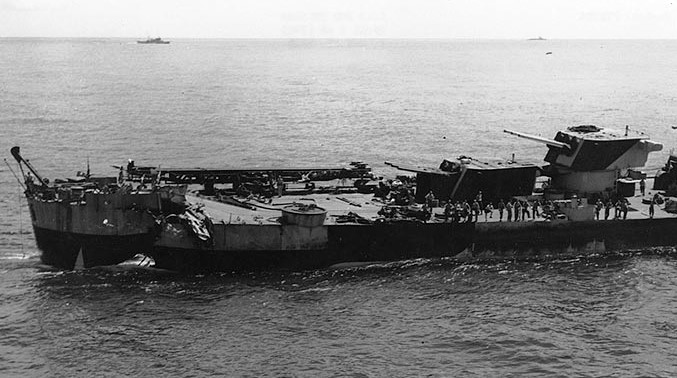
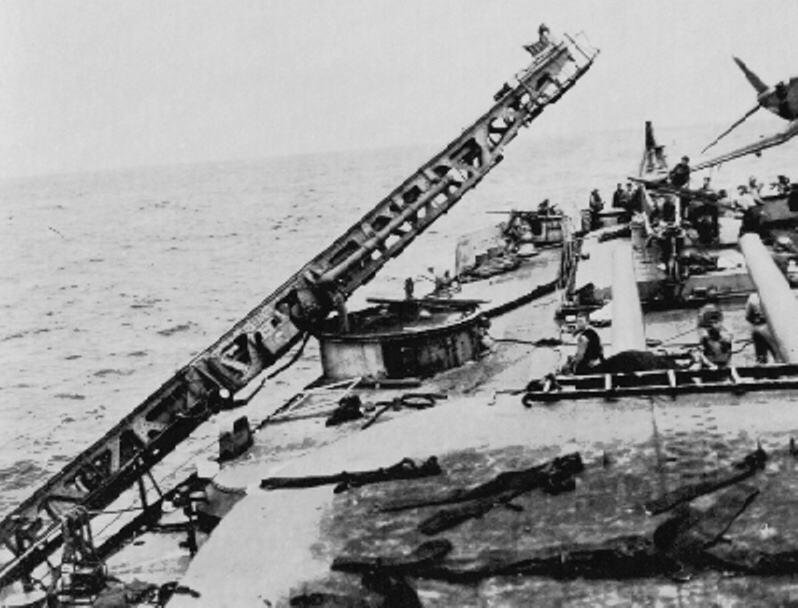
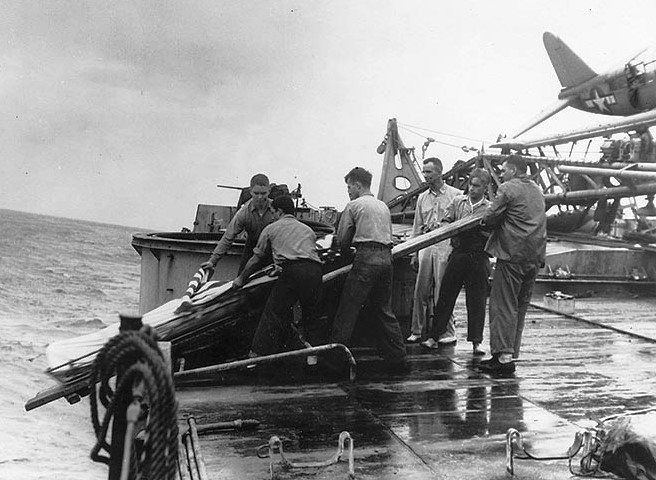
USS CANBERRA and USS HOUSTON arrive at Ulithi. After temporary repairs, USS CANBERRA proceeds to a floating dry dock ABSD-2) at Manus, Admiralty Islands where she begins repairs. CANBERRA is made sea worthy and departs under her own power for Boston Navy Yard for a complete overhaul. December 1944:
The Tkōgeki Butai, during its operational life, is plagued by lack of trained pilots, radar operators and ground communications personnel; lack of vacuum tubes; radar set manufacturing defects and lack of a clear operating doctrine. By this time, the Tkōgeki Butai has been virtually destroyed and its remnants withdraw to Kanoya Air Base, Kyushu. The 762nd NAG’s P1Y Ginga "Frances" bombers are incorporated into the Azusa Tokubetsu Butai (Azusa Special Attack Unit) as suicide (tokko) aircraft. In March 1945, in Operation TAN NO. 2, twenty-four P1Y Ginga attack Task Force 58's Anchorage at Ulithi. [4] 20 December 1944:
After some temporary repairs, USS HOUSTON departs Ulithi and proceeds to the floating dry dock at Manus for further temporary repairs.
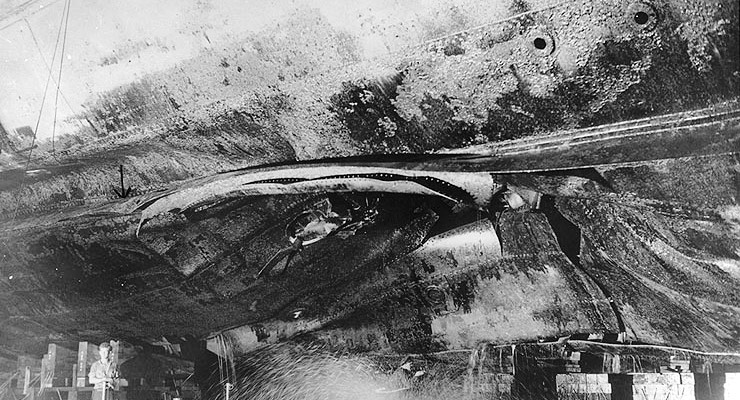
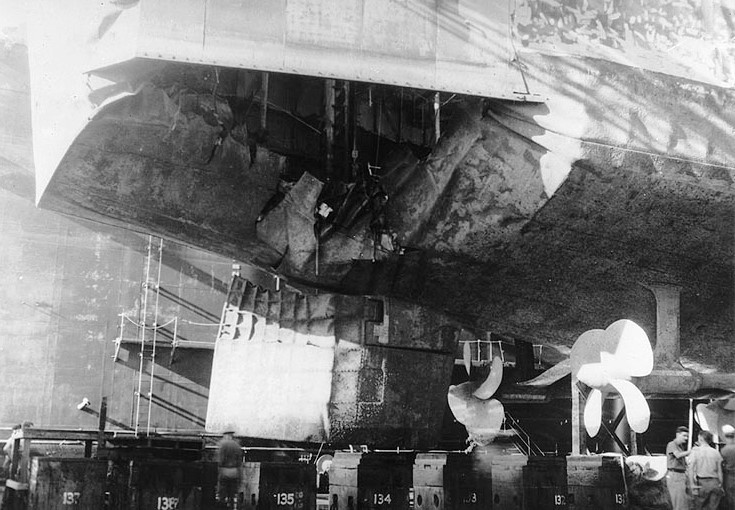
(left) 14 Oct '44 torpedo damage to her hull amidships and (right) 16 Oct '44 torpedo damage to her stern.
Manus. USS HOUSTON's temporary repairs are completed and she is ready to return to New York for a refit and permanent repairs. 16 February-17 October l945:
Boston Navy Yard. USS CANBERRA is docked for repairs. 1945:
After extensive rebuilding, HOUSTON steams out of New York harbor.
Author’s Notes:
[1] Neither this aircraft nor its radar had previously been encountered by the USN. The previous lowest frequency encountered was 190 MHz.The USN TDY ship radar jamming system, deployed to counter German radio-command guided bombs, could not jam the lower frequencies used by Japanese airborne radars. The Navy undertook a major effort to have its contractor redesign the TDY magnetron to cover lower frequencies. This took weeks and was not finished and installed in the Pacific Fleet until after the Battle of the Leyte Gulf. [2] The bomber is piloted by Army Captain Saito Isamu with co-pilot Navy CPO Sato Toshio and Navy WO Sugaya Shinzo as observer. On 4 May 1945, the Army aviators of Saito's crew were decorated with Bukosho -- the highest IJA decoration for valor. The presence of experienced naval aviators undoubtedly helped Captain Saito achieve success. [3] CPO Sato Toshio later dies off Okinawa flying a G4M "Betty" bomber carrying a Yokosuka MXY7 Ohka ("Baka") Type 11 rocket-assisted suicide glide bomb. [4] For more, please see our Special Feature OPERATION TAN NO. 2: The Japanese Attack on Task Force 58's Anchorage at Ulithi on SENSUIKAN! Bob Hackett

